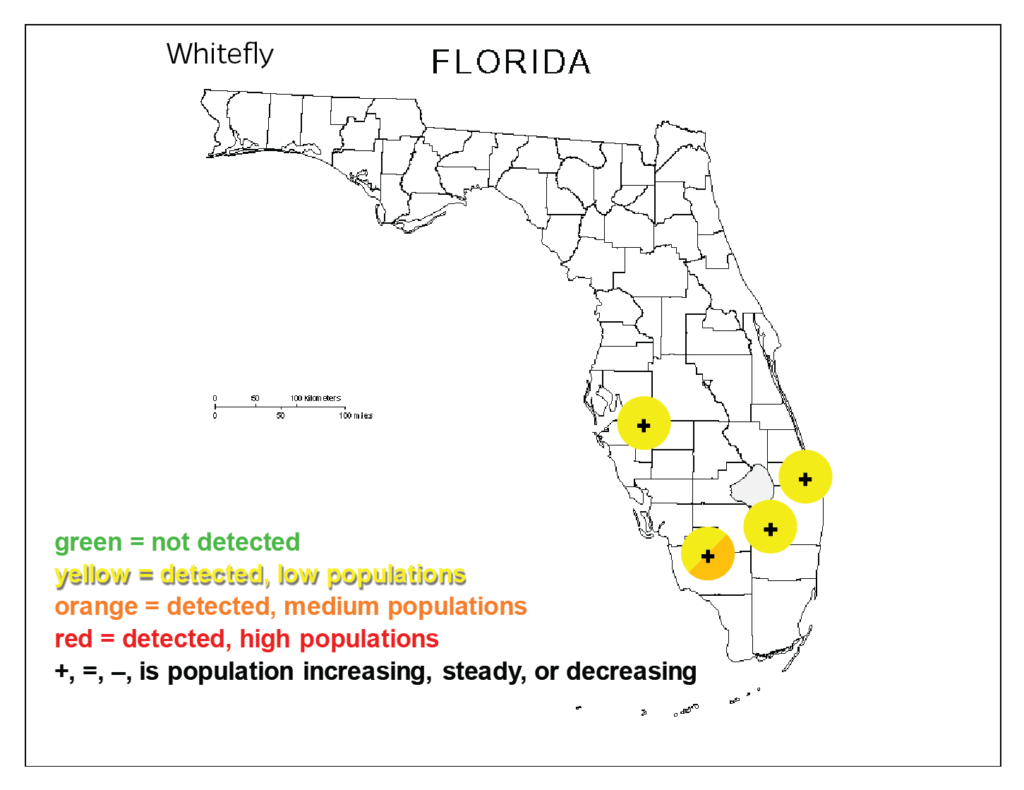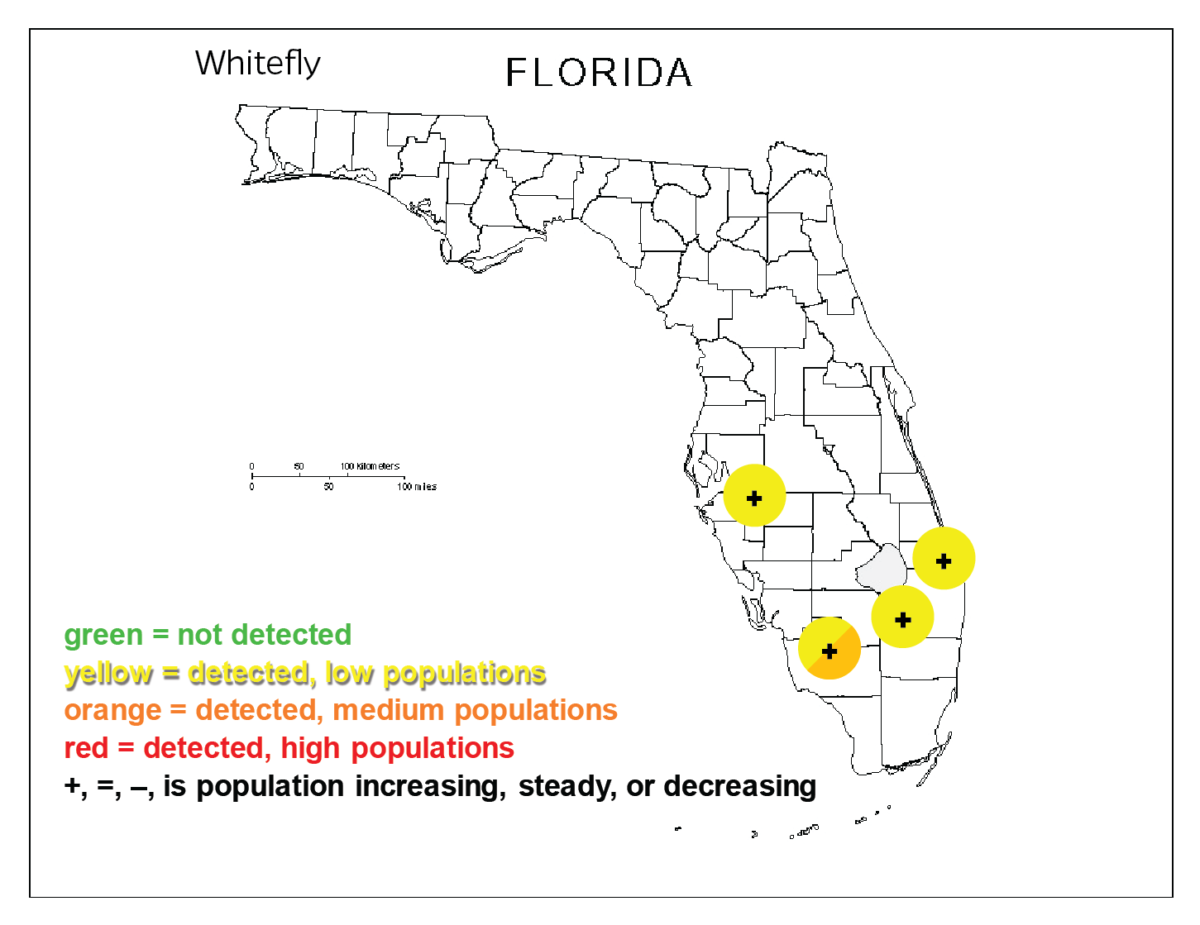Whitefly pressure is normal for this time of year in Southwest Florida and low in other areas but increasing, according to the South Florida Pest and Disease Hotline.

Populations are low but increasing in central Florida and along the East coast.
Whitefly pressure varies in the Southwest Florida region, though it is considered normal for this time of the year. Populations did decrease following the recent rains but have increased recently with the drier weather. Whitefly nymphs can be found in some of the early crops.
Low numbers of whitefly adults were reported in cabbage crops in the Everglades Agricultural Area.
University of Florida Institute of Food and Agricultural Sciences experts caution vegetable growers about silverleaf whitefly thresholds. They are as follows: 0-3 true leaves, 10 adults per plant; 3-7 true leaves, 1 adult per leaflet. If the source of whiteflies is believed to be tomato or melons, where virus is observed, the threshold will be lower.
Field hygiene should be a top priority and considered an integral management strategy for controlling whitefly populations, whitefly-vectored viruses and insecticide resistance. Such management tactics include:
- Destroy crops quickly after harvest, preventing re-growth.
- Destroy all vegetable crops within five days of final harvest to decrease whitefly numbers and source of plant viruses.
- Time burndown sprays to avoid crop destruction during windy periods.
Growers should be mindful of volunteer tomato or cucurbits that may be present in row middles and field margins as these could be sources of whiteflies and virus.










